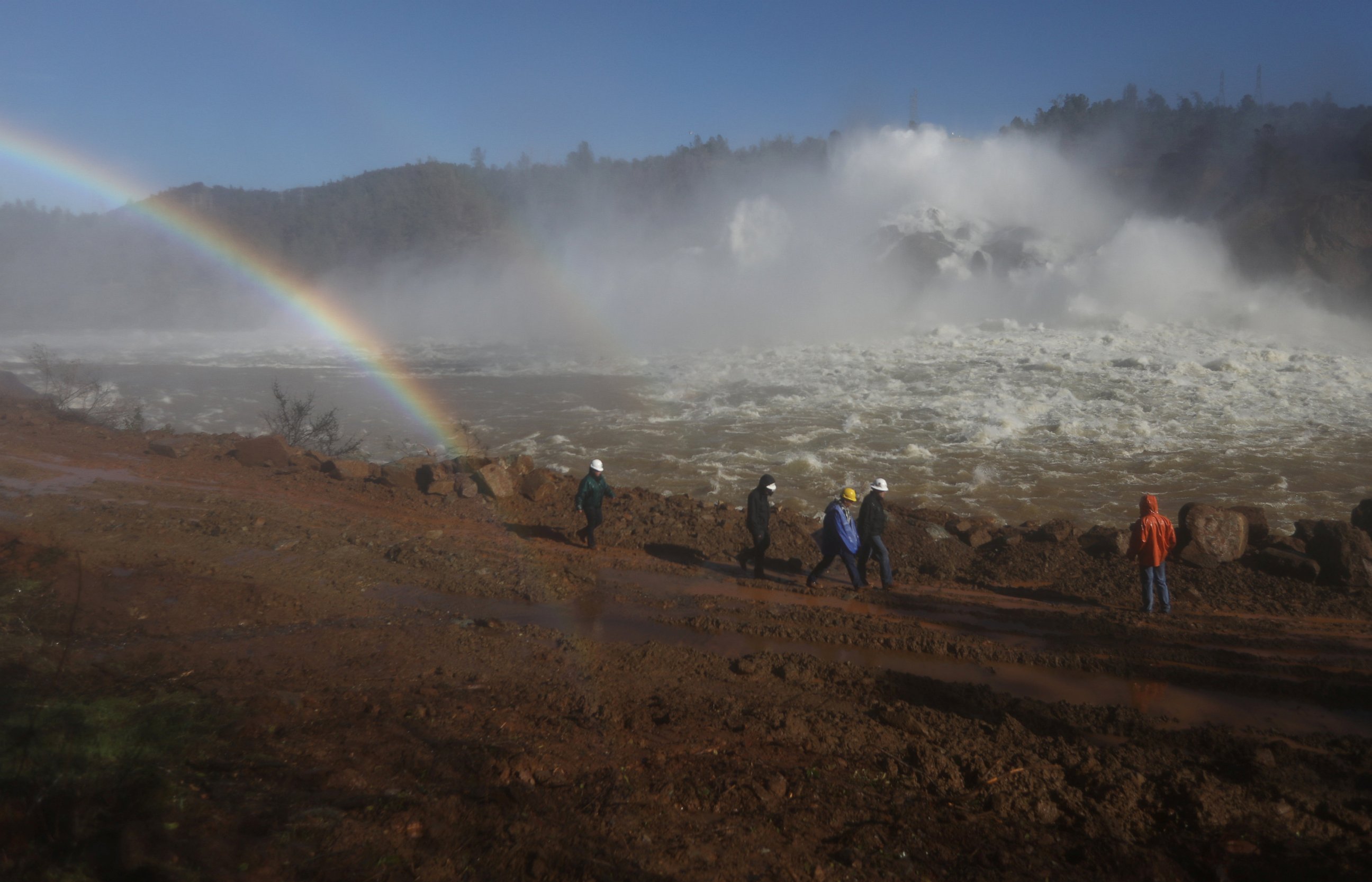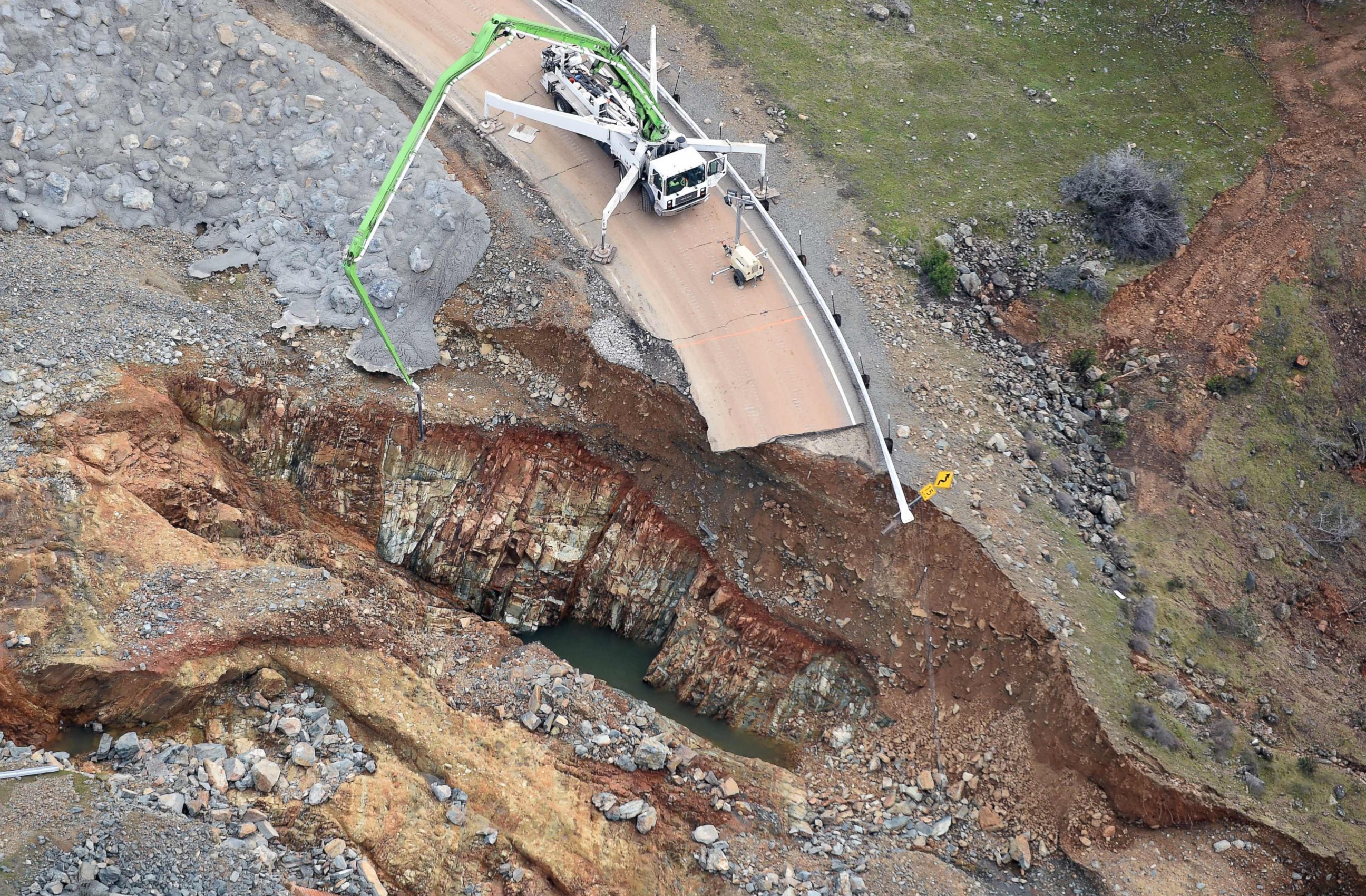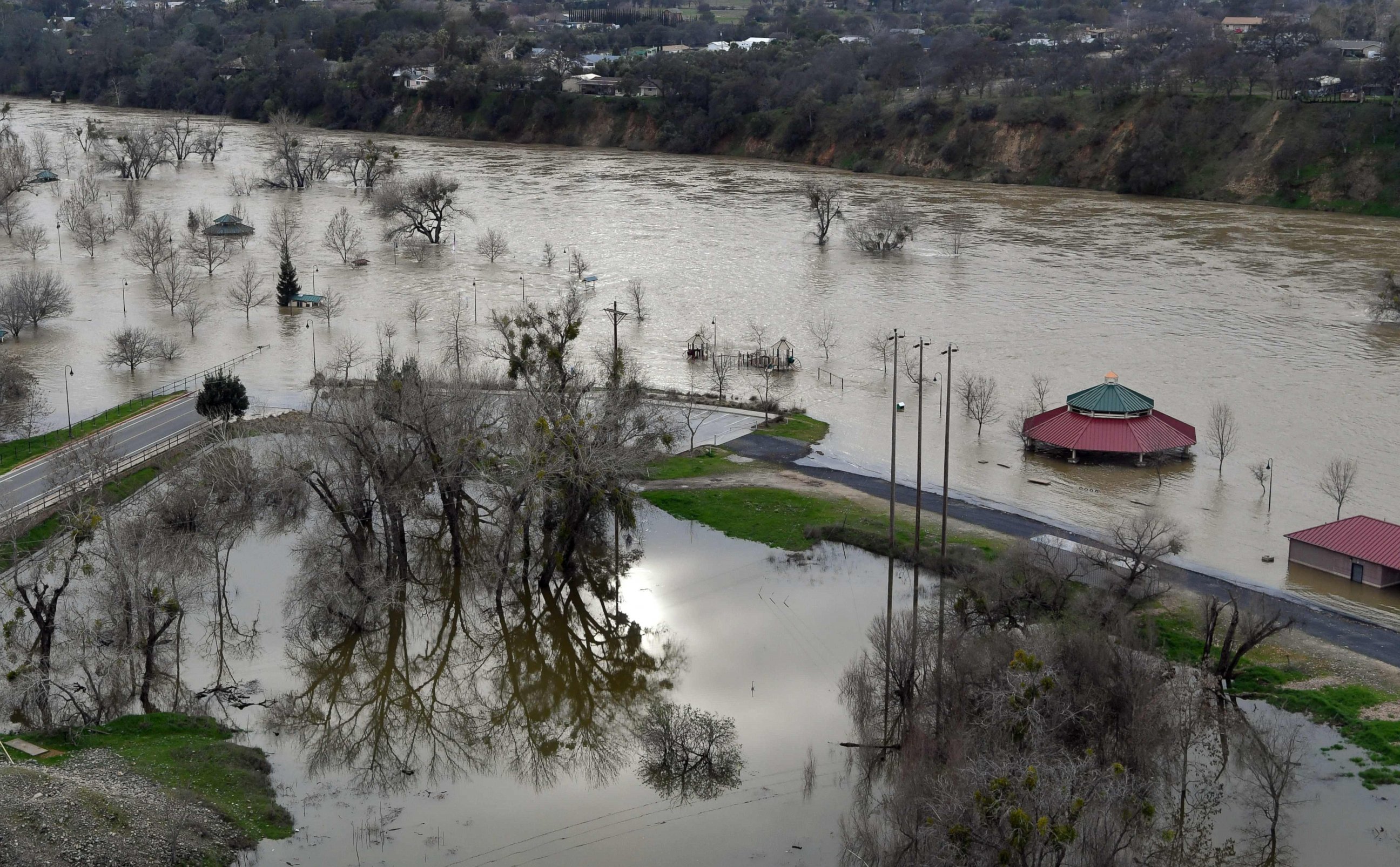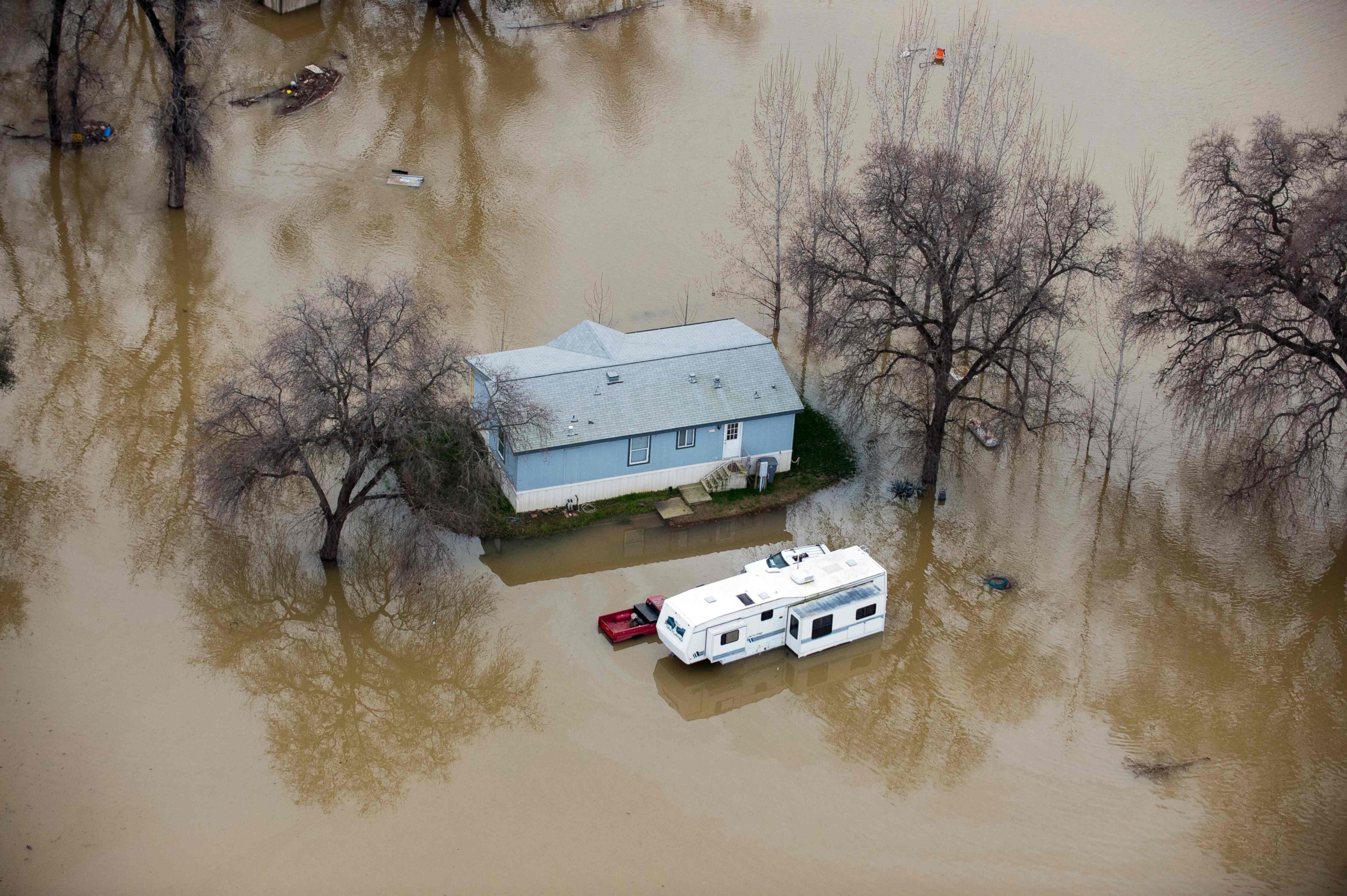Evacuation order lifted for areas surrounding the Oroville Dam
Officials will the dam monitor as forecasts threaten more storms in the area.
— -- California officials have lifted the evacuation order affecting hundreds of thousands of residents in the areas surround the Oroville Dam in Northern California.
Residents will be allowed to return to their homes and businesses allowed to reopen, said Butte County Sheriff Kory Honea.
In a press conference Tuesday, Honea said that thousands of lives were protected from the prospect of a spillway failure due to those that directed the rapid evacuation.
While those evacuations were taking place, workers at the spillway prevented more damage to a massive hole that was developing.

Ahead of more storms are expected to batter Northern California later this week, workers reduced the level of lake below the top of the spillway, which halted erosion. Workers also increased the primary flow from the primary spillway to prepare for future inflows, reducing the possibility that the emergency spillway will be needed in the future.
Officials also developed a plan to fortify the area in front of the emergency spillway with boulders and concrete to prevent against future erosion.
The upcoming storms heightened the sense of urgency for the workers who are attempting to stabilize the area surrounding the Oroville Dam, but the new storms should not pose a threat to the emergency spillway as of today, officials said.

Nearly 200,000 people were evacuated on Sunday over concerns that a damaged spillway at Lake Oroville could fail, flooding the region with water. The reservoir is California's second-largest and is located 75 miles north of Sacramento and about 25 miles southeast of Chico.
Construction and helicopter units worked today to shore up an overflow channel and drain some water from the reservoir at the dam, in the hopes they can prevent spillage before more rain hits the already saturated region of California.
Close to 200 state employees were working at Oroville this morning and eight helicopters were deployed to deposit rocks, agents from the California Governor's Office of Emergency Services (OES) told ABC News. The agency said they have 40 truck deliveries of rock per hour to the eroded areas and helicopters are also delivering a load of rocks every minute-and-a-half. They added that drones are monitoring the area 24 hours a days.
Light to moderate rain is expected Wednesday through Friday, according to ABC News meteorologists, before picking up again next week.
Next week's storms are expected to hit Sunday through next Tuesday and cause area-wide flooding.

Following years of drought in the region, 2017 has seen the wettest start to the year ever recorded in the Sacramento area -- now about a foot above normal for rainfall since October 1, 2016.
The surge in rainfall has wreaked havoc on the Oroville dam, which was already experiencing problems with damaged spillways.
When reservoirs get too full, their operators release extra water down long channels, or spillways, designed to carry it downstream and into safety.
Dam operators first noticed chunks of concrete in the main spillway at Oroville on February 7, according to the Associated Press.
Large concrete patches the size of football fields had washed out of the channel, but dam operators were forced to continue using it, due to rising water levels that reached the top of the 770-foot high dam.
The dam, which provides a significant amount of California's water, is the tallest in the U.S.
Yuba City, with a population 65,000, is the largest city that has been evacuated as a result of the threat posed by the dam, according to the AP, which described the region as being largely rural, with large-scale agricultural interests. High unemployment rates endemic to farming communities affect the region, the AP said.

The Mercury News, a local newspaper, reported that three environmental groups —- the Friends of the River, the Sierra Club and the South Yuba Citizens League —- filed a motion with the federal government in 2005 as part of the Oroville Dam's re-licensing process, urging federal officials to bolster the dam's emergency spillway.
In that motion, the groups warned that the dam did not meet modern safety standards, The Mercury News reported.
The Federal Energy Regulatory Commission (FERC) did not take action based upon their request after state agencies determined the refurbishment an unnecessary expense, the paper said.
FERC declined ABC News' request for comment about the 2005 motion, saying they the project is still a pending matter.
The Associated Press contributed to this report.